Bohemia Crystal
By Tracy A. Burns
World-renowned Bohemia crystal
One of the Czech Republic’s most sought-after products is Bohemia crystal. Given the long history of crystal production in the country, it is hardly surprising that Bohemia crystal now ranks among the world’s best.
The history of Bohemia crystal in the Czech lands
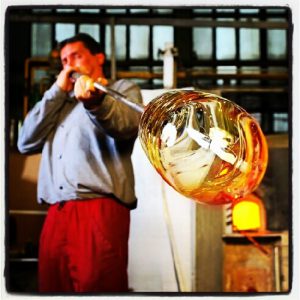 Glassmaking in what is now the Czech Republic extends as far back as the 13th century, when glass was produced in the Lusatian Mountains of north Bohemia. During this time, Bohemian glass was used in monastery windows. The industry thrived during the following century, and in 1414 the first true glass factory in the world was founded in Chřibská. Potash and chalk, the glassmakers discovered, made their products more stable than the Italian imports. Other characteristics of Bohemian glass from this time were its absence of lead and its ability to be cut with a wheel. Various factories sprang up in north Bohemia, including Skalice, Nový Bor and Kamenický Šenov. During the Baroque period, covering the end of the 17th century and extending into the middle of the 18th century, the manufacturing of Bohemia crystal reached a peak of excellence. It was in the 17th century that Emperor Rudolph II’s gem cutter, Caspar Lehmann, invented the process of engraving on glass. The dawn of the 18th century saw Bohemia as the world’s leading producer of crystal. Glass factories were located worldwide, from New York to Cairo to Mexico to Beirut as well as throughout Europe.
Glassmaking in what is now the Czech Republic extends as far back as the 13th century, when glass was produced in the Lusatian Mountains of north Bohemia. During this time, Bohemian glass was used in monastery windows. The industry thrived during the following century, and in 1414 the first true glass factory in the world was founded in Chřibská. Potash and chalk, the glassmakers discovered, made their products more stable than the Italian imports. Other characteristics of Bohemian glass from this time were its absence of lead and its ability to be cut with a wheel. Various factories sprang up in north Bohemia, including Skalice, Nový Bor and Kamenický Šenov. During the Baroque period, covering the end of the 17th century and extending into the middle of the 18th century, the manufacturing of Bohemia crystal reached a peak of excellence. It was in the 17th century that Emperor Rudolph II’s gem cutter, Caspar Lehmann, invented the process of engraving on glass. The dawn of the 18th century saw Bohemia as the world’s leading producer of crystal. Glass factories were located worldwide, from New York to Cairo to Mexico to Beirut as well as throughout Europe.
Bohemia crystal in the 19th century
The 19th century brought the Industrial Revolution and the ability to mass-produce the area’s most intriguing product. Czech crystal was now far easier to make, sell and export. By the second half of the 19th century, Bohemia crystal was being exported throughout the world. Using a single color or two colors of opaque glass, pairs of vases were embellished with flower motifs or with colored lithographic prints featuring well-known paintings. Glass painting was another area at which Czechs excelled. Images are hand-painted on the back of panes of glass and, after a complex technical process, are finally placed in wooden frames. Also, by the middle of the 19th century, Czechs established several schools of glassmaking throughout the country, and they taught the skill in other states. The first black glass in the world was created by a glassmaker in Bohemia, and in 1861 Viennese businessman Josef Schreiber established a grinding plant in Světlá nad Sázavou.
The 20th and 21st centuries of Czech glassmaking
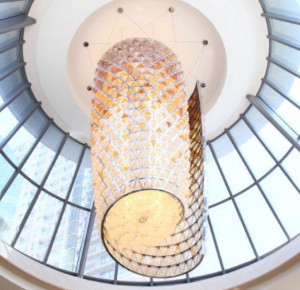 During the 20th century, the Czech lands were devastated by two world wars and the iron grip of Communism. Despite the upheavals, crystal production was maintained, and many an artisan turned out excellent works over the decades. With the coming of the free market in 1989, the crystal was available to foreign tourists flocking to the country. Currently, the Czech crystal is one of the most popular items that visitors buy in the Czech Republic. It is available in a staggering variety of forms – glasses, candlesticks, rings, chandeliers, vases, and much more.
During the 20th century, the Czech lands were devastated by two world wars and the iron grip of Communism. Despite the upheavals, crystal production was maintained, and many an artisan turned out excellent works over the decades. With the coming of the free market in 1989, the crystal was available to foreign tourists flocking to the country. Currently, the Czech crystal is one of the most popular items that visitors buy in the Czech Republic. It is available in a staggering variety of forms – glasses, candlesticks, rings, chandeliers, vases, and much more.
Bohemia crystal – Crystal Factory excursions from Prague
Check out our Crystal factory excursion near Prague:
Bohemia Crystal – Crystal Factory – Private Day Trips from Prague
You can also learn how to blow Bohemia crystal and wind beads yourself!
Bohemia Crystal Experience – blow out a vase and wind beads yourself
Did you know Swarovski was born in Bohemia, where he learned glassmaking?
Daniel Swarovski (1862 – 1956) was an Austrian glass cutter and jeweler born in Bohemia. His father was a Slovak glass cutter who owned a small glass factory, and Swarovski first learned the art of glass cutting in his father’s factory. Swarovski invented new technologies such as machine cutting for crystal beads. He moved from Jablonec in 1890 and settled in Wattens, Austria. On the above-mentioned tour, we will go to a bead pressing workshop that Swarovski’s descendant visited in 2010 when he learned how to use his ancestor’s technical equipment.
Moser crystal – Glass of Kings
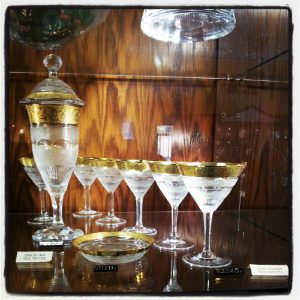 Based in Karlovy Vary (Carlsbad), the Moser glassworks began as a polishing and engraving workshop in 1857. In 1893 the workshop was turned into a glassworks factory with 400 employees. Success came quickly. In 1904 Moser supplied crystal to the Imperial Court of the Austro-Hungarian Empire. A few years later the company began exporting glass to British King Edward VII. At this time, Moser was also winning medals for its excellent glassware. Its Art Nouveau pieces were highly acclaimed, too. The Art Nouveau designs with engraved lilies became legendary. The economic depression of the 1930s hit the company hard, though. When Karlovy Vary was taken over by the Nazis in 1938, the Moser family fled the country. After the war, the Mosers returned to run their glassworks factory and even maintained some degree of independence during totalitarian times while other companies had been nationalized in 1948.
Based in Karlovy Vary (Carlsbad), the Moser glassworks began as a polishing and engraving workshop in 1857. In 1893 the workshop was turned into a glassworks factory with 400 employees. Success came quickly. In 1904 Moser supplied crystal to the Imperial Court of the Austro-Hungarian Empire. A few years later the company began exporting glass to British King Edward VII. At this time, Moser was also winning medals for its excellent glassware. Its Art Nouveau pieces were highly acclaimed, too. The Art Nouveau designs with engraved lilies became legendary. The economic depression of the 1930s hit the company hard, though. When Karlovy Vary was taken over by the Nazis in 1938, the Moser family fled the country. After the war, the Mosers returned to run their glassworks factory and even maintained some degree of independence during totalitarian times while other companies had been nationalized in 1948.
Moser crystal today
The current lead-free products include stemware, decorative glassware, and art engravings. Unlike many other glass manufacturers in the country, Moser actually signs its glassware that contains sodium-potassium but no lead. The sodium and potassium combination makes for a very hard glass. Visitors can tour the factory museum which covers the 150-year history of the firm and has over 2,000 pieces on display.
Exclusive features of Moser crystal
Moser crystal is handmade. The glass is hand-blown into molds and does not contain any lead. Precisely cut edges are another hallmark of the Moser brand and its intriguing designs. The unique coloring is another excellent feature. To make these original hues, colors are melted down with a mixture of raw materials and oxides.
Crystalex
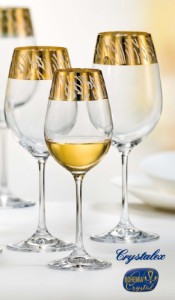 Based in north Bohemia’s Nový Bor, Crystalex came into being during the 19th century, though the name Crystalex was not used until the 1970s. The company also operated a modest factory in Moravia called Karolinka. The Nový Bor region was no stranger to glass production at that time. As far back as the 17th century, numerous glass producers had been located in this area. During the 18th and 19th centuries, all exporting of Bohemia crystal was carried out from north Bohemia. In 1972 the company began using the first automatic line manufacturing stemware. Today both the Bohemian and Moravian factories function and Crystalex specializes in stemware, tumblers, various decorations, vases, jugs, and decanters.
Based in north Bohemia’s Nový Bor, Crystalex came into being during the 19th century, though the name Crystalex was not used until the 1970s. The company also operated a modest factory in Moravia called Karolinka. The Nový Bor region was no stranger to glass production at that time. As far back as the 17th century, numerous glass producers had been located in this area. During the 18th and 19th centuries, all exporting of Bohemia crystal was carried out from north Bohemia. In 1972 the company began using the first automatic line manufacturing stemware. Today both the Bohemian and Moravian factories function and Crystalex specializes in stemware, tumblers, various decorations, vases, jugs, and decanters.
RÜCKL crystal
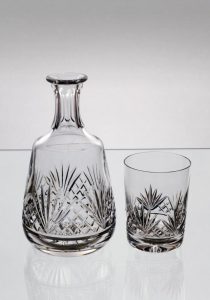 The Rückl family settled in Bohemia during the 17th and 18th centuries and founded a glassworks factory in central Bohemia‘s Nižbor near Beroun in 1846. In 1923 business was booming as the company was comprised of glassworks in Včelnička Skalice and Nižbor and even had a warehouse in Prague. The Bohemia crystal producers received many accolades during the interwar period, manufacturing a wide variety of home and decorative glassware using both crystal glass and lead crystal. After World War II, though, the glassworks was nationalized. Nevertheless, the factory in Nižbor remained highly acclaimed for its cut lead crystal products.
The Rückl family settled in Bohemia during the 17th and 18th centuries and founded a glassworks factory in central Bohemia‘s Nižbor near Beroun in 1846. In 1923 business was booming as the company was comprised of glassworks in Včelnička Skalice and Nižbor and even had a warehouse in Prague. The Bohemia crystal producers received many accolades during the interwar period, manufacturing a wide variety of home and decorative glassware using both crystal glass and lead crystal. After World War II, though, the glassworks was nationalized. Nevertheless, the factory in Nižbor remained highly acclaimed for its cut lead crystal products.
Rückl after 1989
In 1992 the company came into the hands of the Rückl family again via privatization. In 1996 many changes took place at the factory. The Bohemia crystal manufacturer added much machinery by building a modern smelting aggregate, two cooling conveyor furnaces, and a control system to manage the operation. Also, Rückl changed its heating medium to natural gas. The company offers a wide range of cut 24 percent leaded crystals with numerous attractive designs using gilt, hand painting, and sandblasting. Rückl produces and supplies the state with official giftware. Visitors can tour the factory and see all the stages of glassmaking.
Preciosa
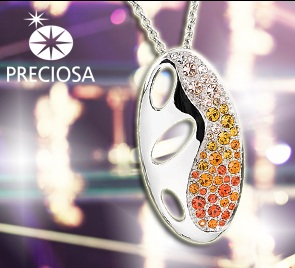 This producer, located in Kamenický Šenov of north Bohemia, has been in operation since 1915. It specializes in beads and fashion jewelry as well as crystal trimming chandeliers and contemporary lighting fixtures. Preciosa even made a name for itself in fashion jewelry during totalitarian times. The company was privatized in the early 1990s. Preciosa produces crystal components, such as machine-cut crystal stones, beads, pendants, chaton chains, metal bindings, chaton balls, and spacers. They offer fine jewelry stones that are natural and synthetic precious stones in a wide assortment of cuts, colors, and sizes. Preciosa also produces historical chandeliers and residential lighting fixtures. In addition, other products include crystal jewelry, fine crystal décor, trophies, and awards. The company’s portfolio also consists of seed beads, beads, decorative handmade glass, and technical glass. Preciosa exports jewelry stones, fashion jewelry, and crystal figurines.
This producer, located in Kamenický Šenov of north Bohemia, has been in operation since 1915. It specializes in beads and fashion jewelry as well as crystal trimming chandeliers and contemporary lighting fixtures. Preciosa even made a name for itself in fashion jewelry during totalitarian times. The company was privatized in the early 1990s. Preciosa produces crystal components, such as machine-cut crystal stones, beads, pendants, chaton chains, metal bindings, chaton balls, and spacers. They offer fine jewelry stones that are natural and synthetic precious stones in a wide assortment of cuts, colors, and sizes. Preciosa also produces historical chandeliers and residential lighting fixtures. In addition, other products include crystal jewelry, fine crystal décor, trophies, and awards. The company’s portfolio also consists of seed beads, beads, decorative handmade glass, and technical glass. Preciosa exports jewelry stones, fashion jewelry, and crystal figurines.
How do you recognize authentic Bohemia crystal?
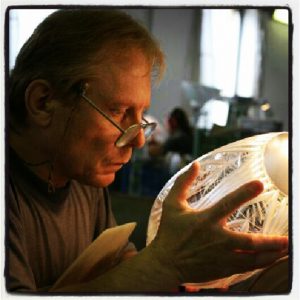 Here are some hints about how to distinguish fake pressed glass produced in China from the original Bohemia hand-cut crystal. Most crystal glasses contain a certain amount of lead, which gives the glass the qualities listed below. (However, Moser crystal does not have lead in it.)
Here are some hints about how to distinguish fake pressed glass produced in China from the original Bohemia hand-cut crystal. Most crystal glasses contain a certain amount of lead, which gives the glass the qualities listed below. (However, Moser crystal does not have lead in it.)
– When you hold it against the sun, it shows rainbow colors.
– It is heavier than normal glass.
– When you tap it, the glass makes a longer sound than normal glass does.
When the glass contains a certain amount of lead, artists who cut the decorative patterns into the glass can make cuts into the glass without leaving any cracks. When workers use a diamond cutter, it is said to be like slicing butter. After they are cut, the patterns look matt. The crystal glass is immersed in an acid bath, which gives it the appearance of clear crystal again. Because it is then difficult to distinguish from the pressed glass made in China, the glassmakers sometimes make a few more cuts after giving it the acid bath. They leave the cuts in the glass so that it is clear that the pieces of art have been hand cut.
Beadmaking in Bohemia
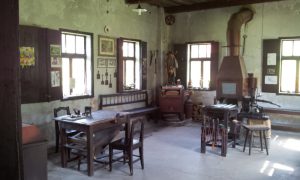 The first button mold for pressing glass was invented in 1732 while the first glass bead mold was introduced in 1832. You can learn about the life of glass and bead makers in Bohemia during a visit to a bead pressing workshop in Jablonec of north Bohemia, where observers can also see demonstrations of functional technical equipment. Practical demonstrations of production are included, and visitors have the chance to try to produce wound beads by themselves. There is also a Museum of Glass and Jewelry in Jablonec. Check out our tour – you can learn how to blow Bohemia crystal and wind beads yourself! Bohemia Crystal Experience – blow out a vase and wind beads yourself
The first button mold for pressing glass was invented in 1732 while the first glass bead mold was introduced in 1832. You can learn about the life of glass and bead makers in Bohemia during a visit to a bead pressing workshop in Jablonec of north Bohemia, where observers can also see demonstrations of functional technical equipment. Practical demonstrations of production are included, and visitors have the chance to try to produce wound beads by themselves. There is also a Museum of Glass and Jewelry in Jablonec. Check out our tour – you can learn how to blow Bohemia crystal and wind beads yourself! Bohemia Crystal Experience – blow out a vase and wind beads yourself



